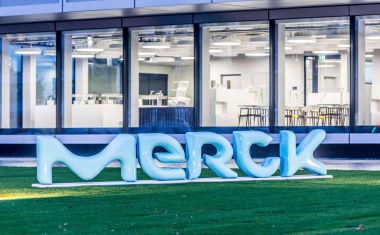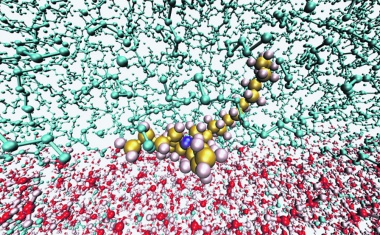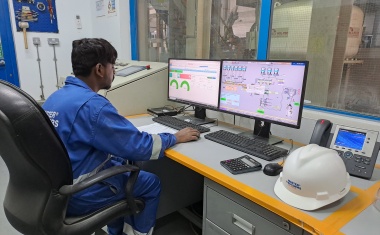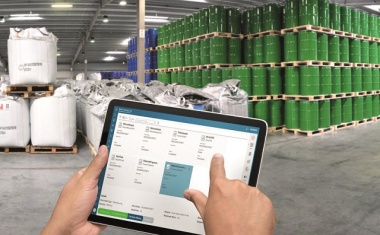
Loady shows solution for digital preloading restrictions
Loady has published a white paper on the digitalization of preloading restrictions in liquid logistics.

Loady has published a white paper on the digitalization of preloading restrictions in liquid logistics.

Strong Supply Chains, Efficiency, Digitalization, and Talent Development are Crucial for Chemical Distributors

Driving Smart Growth: How Azelis is Redefining Chemical Distribution through Digital Transformation

Part 3: Seven Theses for successful Digitalization in Pharma

Part 2: Digital transformation - 10 Years after the Start of Pharma 4.0

Part 1: Building a Business Case for Pharma 4.0

Discover how digitalization is revolutionizing energy and resource efficiency in plant operation in the chemical industry.

How pharma & biotech company transformed warehouse capacity planning for strategic growth

Tapping into Future-oriented Synergies of Data Analysis in the Materials Sector

Valerie Diele-Braun, CEO of IMCD, shares her vision for sustainability, global expansions, and strategic direction in an exclusive CHEManager International interview.

John Banovetz, Chief Technology Officer at 3M, on the role of digital transformation in realizing the company's goals.

In 2024, the chemical distribution industry is at a pivotal moment, navigating both challenges and new opportunities. As distributors grapple with a landscape shaped by shifting global trade routes, demand constraints, and digital disruption, their roles are evolving far beyond traditional bulk breaking.

Interview with Franziska Walde and Lukas Fischer, Refinq

Dorothee Arns, Director General of FECC, discusses current challenges, market trends and her vision for the chemical distribution industry in Europe.

Today, economic success is defined by a different perception and practice of supply capability and supply security. This applies not only to the European trade with chemicals but to the entire chemical value chain.

Industry experts Michelangelo Canzoneri, Josef Trapl, Wolfgang Winter, Christian Woelbeling, and Thomas Zimmer – all members of ISPE’s Pharma 4.0 guide core team – explain the transformational challenges and critical success factors of the digital Pharma 4.0 journey.

The chemical industry faces acute labor shortages because the talent pool is shrinking, but the industry remains heavily reliant on manual work. Therefore, realizing labor productivity potential will be decisive for business continuity and future growth.

Cell and gene therapies (CGTs) present a revolutionary approach to the pharmaceutical industry. However, several complexities do arise on a logistical spectrum that diverge from those of traditional pharmaceuticals.

Artificial intelligence (AI) can help companies in the process industry capture, retain and access valuable historical expertise and ease the transition for new colleagues in the plant.

The logistics industry urgently needs digital transformation to ensure quality and to tackle challenges such as the shortage of skilled workers and sustainability.

German chemicals, pharmaceuticals and life sciences group Merck has opened a digital hub in Singapore, the first outside of the US and Europe for its digital business.

On January 1, 2024, Anna Bertona will take on the role of Group CEO, succeeding Hans Joachim Müller, who will retire after serving more than 11 years in that role. Ralf Kempf asked Müller and Bertona about the foundations for the group's continued success and plans for its future strategic direction.

Manual experiment monitoring and data capture is still the status quo in most biotech and pharma labs, compromising efficiency and project timescales. But there is a better way.

The Spanish computational chemistry start-up Nextmol (Bytelab Solutions), a spin-off from the Barcelona Supercomputing Centre, offers a software-as-a-service (SaaS) platform that accelerates research and innovation in sustainable specialty chemicals through “in silico” experiments using molecular modeling and artificial intelligence (AI).

Many life science companies generate large swathes of data.

Achieving sustainability targets and productivity improvements are primary levers that make operations teams successful. At MBCC Group, one of the leading construction chemicals players, Wayne Towell, Vice President of Operations has been driving various initiatives to track, monitor and enhance productivity of their plants across the globe.

As a global specialty chemicals company, Altana develops innovative technologies, solutions, and products with a clear customer focus. The company aims to strengthen and expand this position in the long term. The topic of digital transformation plays a key role.

As a global specialty chemicals company, Altana develops innovative technologies, solutions, and products with a clear customer focus. The company aims to strengthen and expand this position in the long term. The topic of digital transformation plays a key role.

Toward achieving cost savings in the double-digit million euro range, Germany’s OQ Chemicals, part of the Oman-based OQ energy group, has announced a cost-cutting scheme that will see it cut 10% of the workforce.


Numerous crises such as climate change, energy shortages, raw material shortages, war in Ukraine and the consequences of the pandemic are putting value chains worldwide to the test.

Many chemical executives say their companies have made significant progress in their digitalization efforts in the last two years – and they are even more excited about it now.

Many chemical executives say their companies have made significant progress in their digitalization efforts in the last two years – and they are even more excited about it now.

Dorothee Arns, Director General of FECC, discusses current challenges, market trends and her vision for the chemical distribution industry in Europe. The interview was conducted by Michael Reubold and Ralf Kempf.

For many years, fine and specialty chemicals markets were on a robust growth path.


























